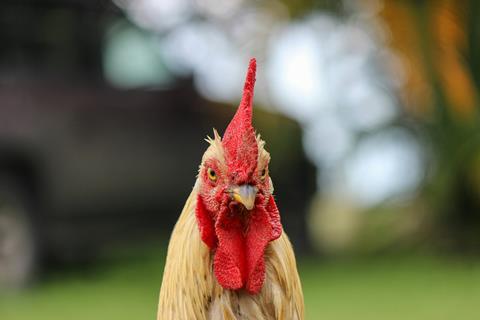Antimicrobial peptides can control Salmonella infections in chickens and thus have the potential to improve food safety and public health, according to a new study. The study was published in Microbiology Spectrum, a journal of the American Society for Microbiology.

“Antimicrobial peptides have the potential to be alternatives to antibiotics and thereby could mitigate antibiotic resistance,” said corresponding study author Gireesh Rajashekara, BVSc, Ph.D., Professor and Associate Dean for Research and Advanced Studies, Department of Pathobiology, College of Veterinary Medicine, University of Illinois Urbana-Champaign. “These peptides not only can kill Salmonella but also other related bacterial pathogens such as E. coli, so they could be really valuable in controlling a broad range of pathogens.”
READ MORE: Gene found in rough Salmonella Infantis variant offers drug target for variety of pathogens
READ MORE: Rising antimicrobial resistance in some Salmonella serovars isolated from retail chicken meat
The researchers conducted their study to identify antibiotic alternatives to control Salmonella in chickens. Salmonella is one of the major causes of foodborne illnesses in the U.S., and chickens and chicken products (eggs and meat) have been considered the main vehicles of Salmonella infection in humans.
Antibacterial activity
Antimicrobial peptides, which are short chains of amino acids, have the potential to kill harmful bacteria without inducing resistance to antibiotics. In the new study, researchers identified a set of antimicrobial peptides that could kill many different types of Salmonella in test tubes, then showed they could also kill Salmonella in chickens. The antibacterial activity of the peptides is likely due to their effect on Salmonella membranes. The researchers said the peptides retain their activity upon exposure to heat and protease treatments, characteristics necessary for the use of antimicrobial products in the poultry industry.
“We identified 2 antimicrobial peptides that kill many different types of Salmonella and also reduce Salmonella load in chickens,” Rajashekara said. “This study could provide a framework for developing and using antimicrobial peptides to control Salmonella in chickens, thereby promoting food safety and public health. Our future work is to test these peptides in chickens on a large scale, optimize their delivery in water and/or feed, understand better how they kill Salmonella, and explore more peptides like these for their anti-Salmonella activity.”







No comments yet